The Bausch & Lomb 610mm F6 AeroTessar - the rear element of the front group unjammed
Quite sometime ago I purchased a 610mm AeroTessar, it's real heavy, an extra tripod/light stand has to be used to support under the ext. bed of my Toyo 810 to support this behemoth, and everything has to be dis-assembled to reframe. It's just an ordeal to use.
On the plus side which excited me in buying this lens in the first place was of course 610mm worth of lens which w/a fast wideopen aperture of F6. I also planned to experiment w/this lens by unscrewing the rear element of the front cell to induce spherical aberration similar to the way it's done w/my Velostigmat II w/its diffusion ring.
The rear element has a metal casing w/threads, and it screws into the casing which contains the front front cell, I couldn't unscrew the rear element out of the front cell, it was jammed. After several attempts to unjam the rear glass, I gave the lens to Dean @ Dean's Camera Repair and he went to work. Nothing worked until he bored out a small hole in the casing of the rear element, and inserted a small tool into the hole and taped on it approximately 1000 times according to Dean's reckoning, over the course of 3 1/2 weeks before he worked the rear element loose.
Out of curiosity I asked Dean why he thought the very light taps would work and he said that each tap set up a vibration and that sooner or later w/repetitive tapping that the element would work loose. He was right.
This is the image of the rear glass leaning up on where it screws into the front cell, the 253.5 AeroTessar I bought later is constructed in exactly the same way as the 610mm you see here. There's something about either the glass or how it's been polished, and there's a sparkle to it, particularly on my 253.mm which is in better shape than the 610mm which looks better than almost all of the glass I have, even better than my 250mm Apo-Tele Xenar which I bought new for my Silouette 612 camera. The glass is simply beautiful, it looks as if you're looking into a perfectly still body of water and not glass, and this is an old lens, I wonder why the glass on this lens stand apart as it does w/it's clarity and sparkle.
The 610mm is bigger in scale than either my 300mm Velo II or the 253.5 AeroTessar, thus the rear glass can be screwed out and away from the the front cell approx. 1/16" farther than the 3/8" maximum of my Velostigmat II diffusion ring w/its set screw removed.
I got to solve the logistics involved in shooting w/the giant, but I'm going to do despite the ease of using the 253.5mm lens because of its FL and still fairly wide aperture which I'm hope will render some special SM in a spectacular way
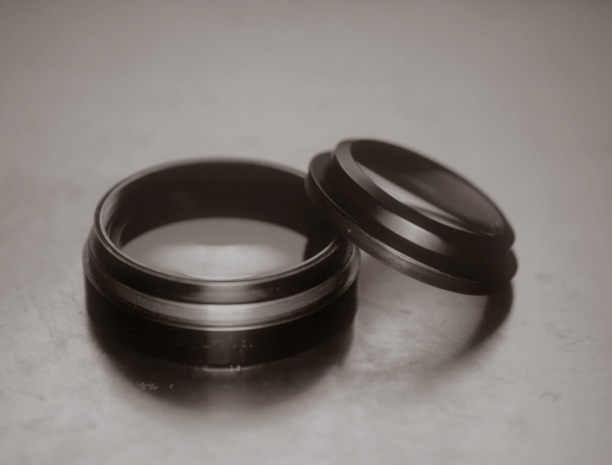
The Bausch & Lomb 253.5mm AeroTessar - 'AshTray'
That's what this look'd like to me, a frosted glass translucent ashtray with a lot of curves. I though you called this a square but Wikipedia says that a square like n plane geometry cannot be a square in spherical geometry like this shape. Evidently the sides can be straight, and the angles can be equal, but the sum of these angles aren't equal to that of a square from plane geometry, thus this shape is called a 'spherical cube'. Finding out about all this was almost as much fun as shooting the thing.
The ashtray is being illuminated from below. This is sitting on a 'top hat' extension/lensboard which is sitting on my transparency light table so that the blk of the 'top hat' blends into the background making the ashtray look as if it's suspended in space.
With a translucent object, whatever's not transmitted through the glass is going to be reflected, and I tried to play around w/this concept by how I lit this thing.
I've still got the rear glass of the front cell wound out to the same position as I used in the previous shots.
Ciao
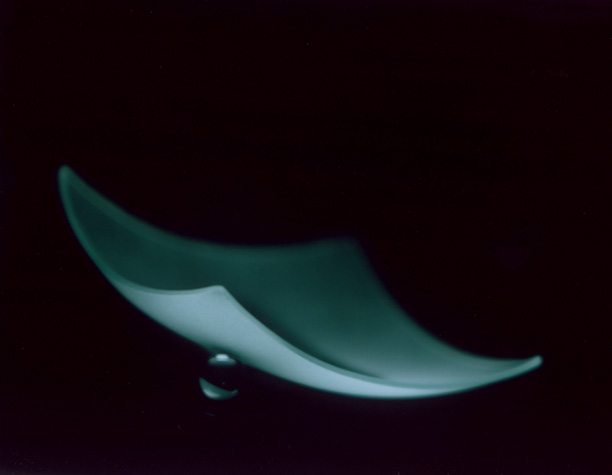
The Bausch & Lomb 253.5 AeroTessar - 'Bowl'
This image was shot w/the AeroTessar w/the rear element of the front cell unscrewed about halfway out. It's a shot of what came into existence as a fruitbowl which has a series of thickened 'ribs' around it's circumference. I picked this thing up from a discount store, and realized immediately that the ribs on this bowl formed a series of magnifiers around the outside of the bowl which I could use in playing around w/reflection and distortion.
I cut one of my flat plastic page magnifers so that its corners would sync up with the edges of the bowl and pointed one of the corners in the direction of the camera, and placed the bowl over the magnifier on my brushed aluminum. The striated lines you see aren't on/in the bowl, I assume they're from the grooves created from the fresnel pattern of the magnifier and being magnified by the bowl, also the 'zig zag' effect from the bowl sitting over the magnifier is from distortion and of course the edges of the flat page magnifier are straight.
This has not been photoshopped, nothing has been added or removed. This has been one of the more interesting curios I've ever lucked up on.
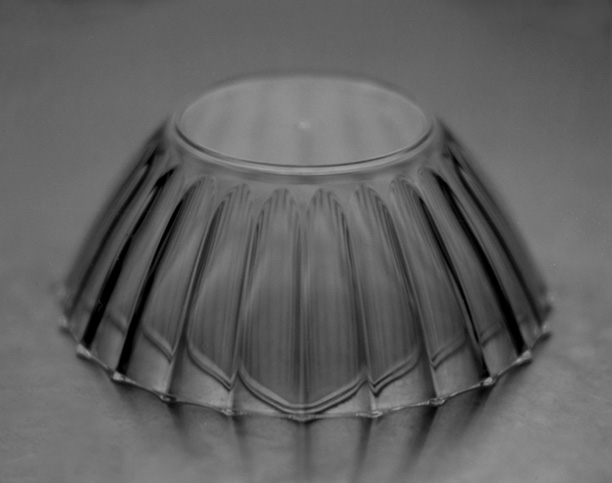
The B&L 253.5mm AeroTessar - Soft Focus by unscrewing the rear element of the front group
I first purchased the 610mm F6 Aerotessar and considered myself fortunate to get one until I found out how heavy it was, w/its military casing, it weighs close to 35-40 pounds. I had Turner Precision take some t6061 pipe stock and machine/duplicate the original casing/threading, but that still left me w/a lens weighing a prohibitive 30 pounds.
I can still use the lens on my Toyo 810, but I've got to support my front ext. bed with an add. lightstand to keep the lens from bending the ext. bed, now if I want to reframe I've got to dis-assemble the whole set-up. The solution is to machine a very costly mod. to my Ries head to support the front of the Toyo w/the 610mm AT aboard. I intend to do this in the future, but this whole project is/was looking 'long ago' and 'far away' for now.
It's been said the AeroTessar is optimized for the red end of the spectrum, and I love the 'Carl Zeiss' glow/sparkle this lens seems to have, a look I remember from my Rollei days when I swore by Carl Zeiss. I also wanted to play w/unscrewing the rear element of the front group of the AeroTessar using it as a SF lens. The rear element of this AeroTessar is frozen and I've got it a Dean's camera repair where Dean will try to get it loose.
In the meantime, another AeroTessar, a 253.5mm, came on the market. I had no idea the lens came in this FL, but I was able to purchase it from Ken Osthimer. The lens is very contrasty, very sharp, and the rear glass of the front group is easily unscrewed which allowed me to use this lens as a SF lens in the same way ala the Velostigmat II.
The AeroTessar was never intended to be used like the Velostigmat II, and thus the rear glass of the front group unscrews backwards in the direction of the rear cell. You have to take the front cell off, and then unsrew the rear glass of the front cell if you want to take it off. There's a very small gap between the front and rear cell which is taken up by the lens iris diaphragm so you can only unscrew the back of the front cell a 'smidgeon' before you impinge on the iris diapragm and the rear cell.
The fix to be able to use this lens like a Velo II w/diffusion control is simple, take off the front cell, unscrew the rear glass out as far as it will go if you like(I use low residue blue tape to hold it in position after I unscrewed it out to whatever position), and then screw the front cell back on, but only in a couple of cycles/revolutions. You'll now have the same configuration as the Velostigmat II w/diff. cont., the threads of the front cell are showing, the proviso being my 253.5 AeroTessar is way smaller than my 300mm Velo and a diff. FL, so you won't be able to screw out the rear glass as far, maybe about 60-70% of the what you can do w/a Velo II.
I've uploaded 3 images, '25Watt', 'Mag Sphere', and 'MagSphere II, which I think gives an idea of some of the diff. bet. the AeroTessar and the Velo II. What I did, and my first impressions........these images were shot w/the rear glass of the front cell unscrewed out to 2 positions, the first position was about a third of the way before you end up screwing the glass all the way off, the 2nd pos. was about 60% all the way out.
The AT combined w/fuji 4x5 instant film compresses highlights in a very pleasurable way, w/this lighting scheme and the highlights bouncing off the bulbs in the '25Watt' image, I would've had pronounced flare/plenty of glow from several of my other lenses if I'd used them on this image. The lens has a smooth/sharp/contrasty sparkle whereas I think the Velo gives a softer rendition with plenty of glow when using it screwed out quite a ways.
I love the look, and think that this lens is a wonderful 'sidekick' to the Velo II, w/the 2 lenses providing you with a great deal of range in terms of how you want to render a particular subject matter.
I've got a bad habit of mentioning 'Soft Focus', this lens is very good at rending a 'Smooth' texture to the surfaces of the subject matter.
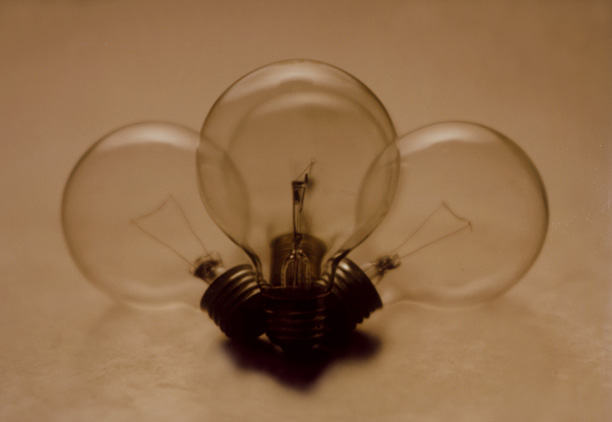
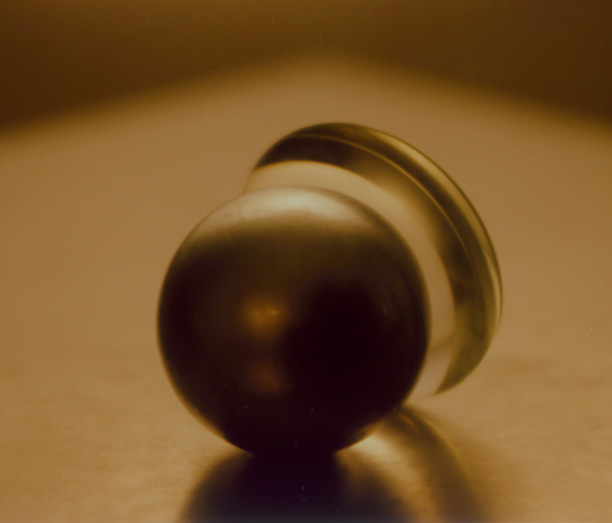
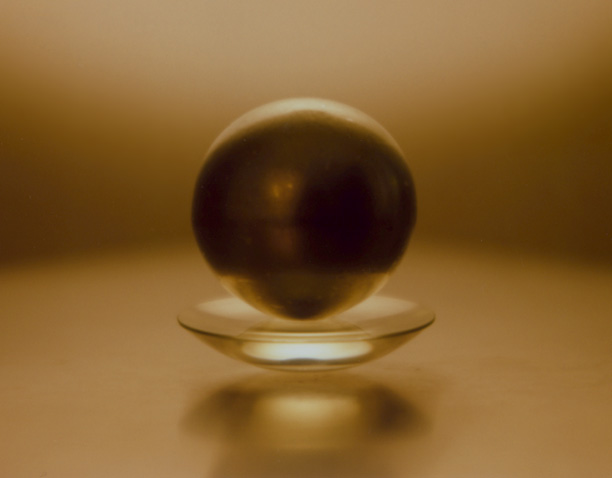
Grace

P&S Visual Quality
Fortepan 200 developed in Pyrocat HD
![[Your Site Name] [Your Site Name]](/storage/WideOpen%203%20tst2.jpg)
